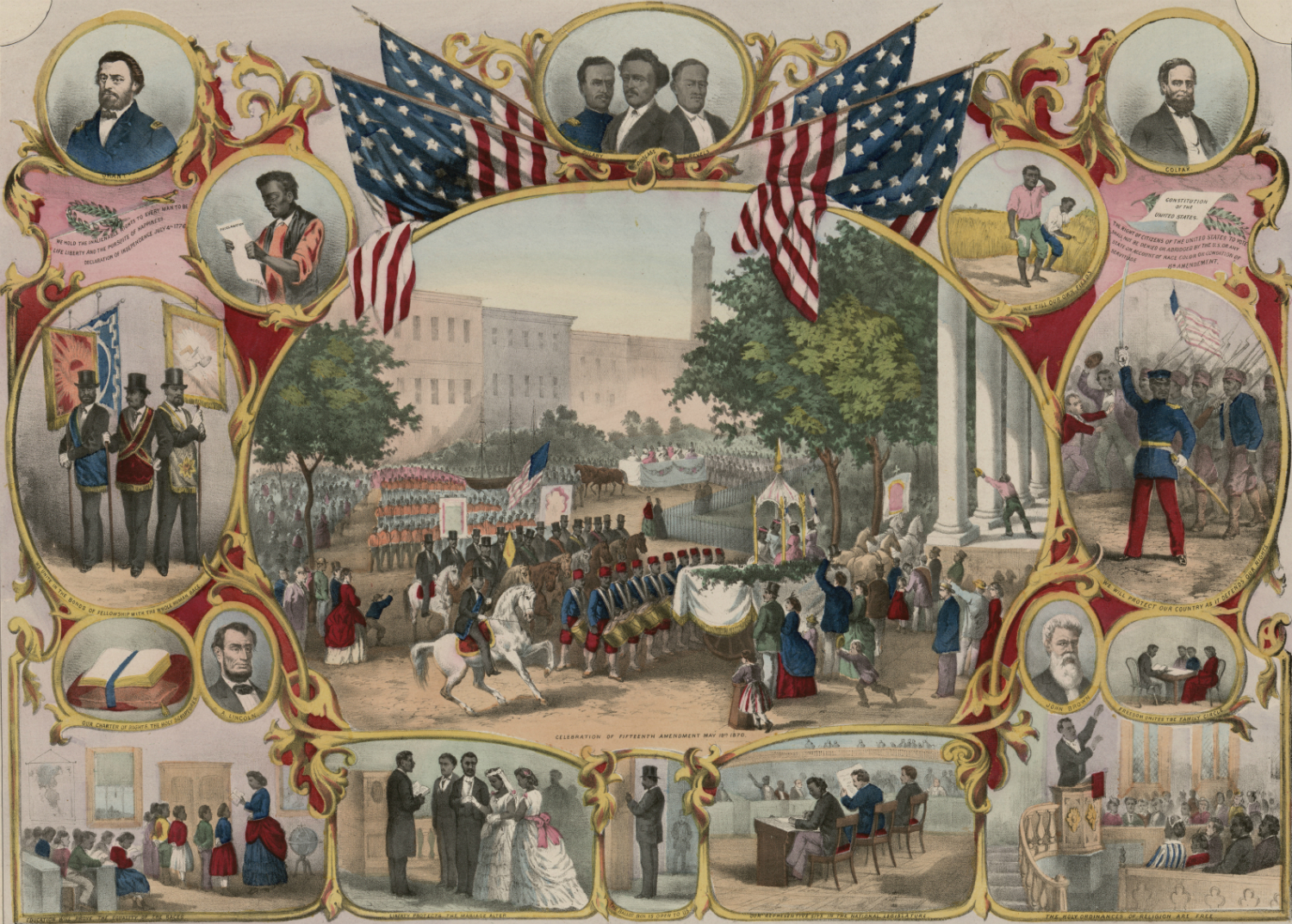This article was written by Craig A. Landy, a partner at NYC firm Peckar & Abramson, PC. Mr. Landy talks more extensively about this topic in Issue 12 of The Historical Society of the New York Courts’ Judicial Notice, a journal of articles of historical substance and scholarship that uniquely focuses on New York legal history. This latest issue of Judicial Notice is ready to be shipped out and is only available to Society Members. Don’t miss out and Join the Society!
Photo: The Fifteenth Amendment. Celebrated May 19, 1870.
Pub. by Thomas Kelly, New York, c. 1871, showing the grand celebratory parade in Baltimore. A similar parade in New York City on April 8, 1870 drew over 1,500 spectators and over 7,000 participants. Library of Congress, Prints & Photographs Division, LC-DIG-pga-01767
When did slavery end in New York State? That’s not an easy question to answer. In 1799, New York gradually freed future generations who would otherwise have been born into slavery, but left enslaved thousands born before 1799. It was not until March 31, 1817 that the New York legislature ended two centuries of slavery within its borders, setting July 4, 1827 as the date of final emancipation and making New York the first state to pass a law for the total abolition of legal slavery. When Emancipation Day finally arrived, the number of enslaved men and women freed was roughly 4,600 or 11% of the black population living in New York and the black community and its supporters held joyous celebrations and parades throughout the state.
Slavery existed in New York State from colonial times through the creation of the modern state. Alexander Hamilton, John Jay and other prominent New Yorkers owned slaves at one time, but the more reform-minded of these formed organizations to end slavery in New York, such as the New York Manumission Society. New York’s free African-American community also led the anti-slavery movement through activist ministers and tireless black abolitionists.
The 1799 gradual abolition law declared that children born after July 4, 1799 to enslaved mothers in New York would be born free, but would have to provide free services to their mothers’ masters until they reached 25 if female and 28 if male. Because the law applied only to those born after 1799, slavery continued for those enslaved born before that year and a final act of emancipation was needed to eradicate slavery in the state. One was passed on March 31, 1817, even though some of those freed were required to continue to serve their masters under an indenture for a term of years. Yet no sooner had slavery been slated for extinction in New York than the right of blacks to vote in New York came under bigoted political attack. The New York Constitutional Convention of 1821 was called to extend universal suffrage across the state and it did abolish property qualifications for white men, but at the same time the convention delegates disenfranchised the states’ African-American citizens—including those to be freed in 1827—by limiting the right to vote by free black men to those who owned substantial property. New York’s racialized suffrage standards would not be remedied until the Fifteenth Amendment of the U.S. Constitution was passed in 1870. Sadly, the state had to be compelled to allow equal voting rights for New York’s African-Americans.
Contrary to the popular narrative, the southern states were not alone in their adamant refusal to end slavery. New York also held on to that repressive institution until the free black community and the Manumission Society combined to persuade Governor Daniel D. Tompkins and the state legislature to end slavery within its boundaries. The 200th anniversary of the Final Act of Emancipation is celebrated in “When Men Amongst Us, Shall Cease to be Slaves: The Bicentennial of New York’s 1817 Final Act of Emancipation,” in the forthcoming issue of Judicial Notice soon to be released.

